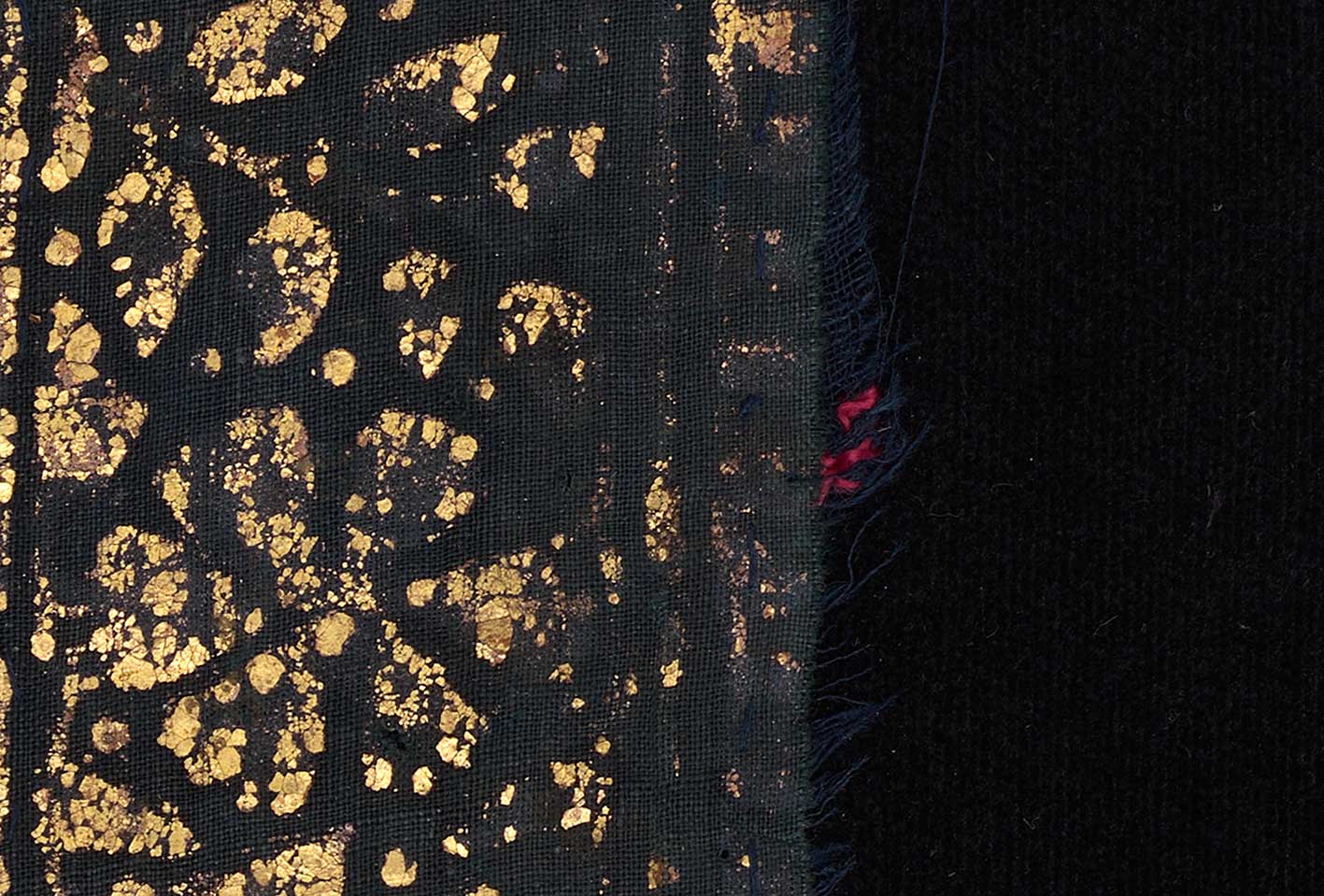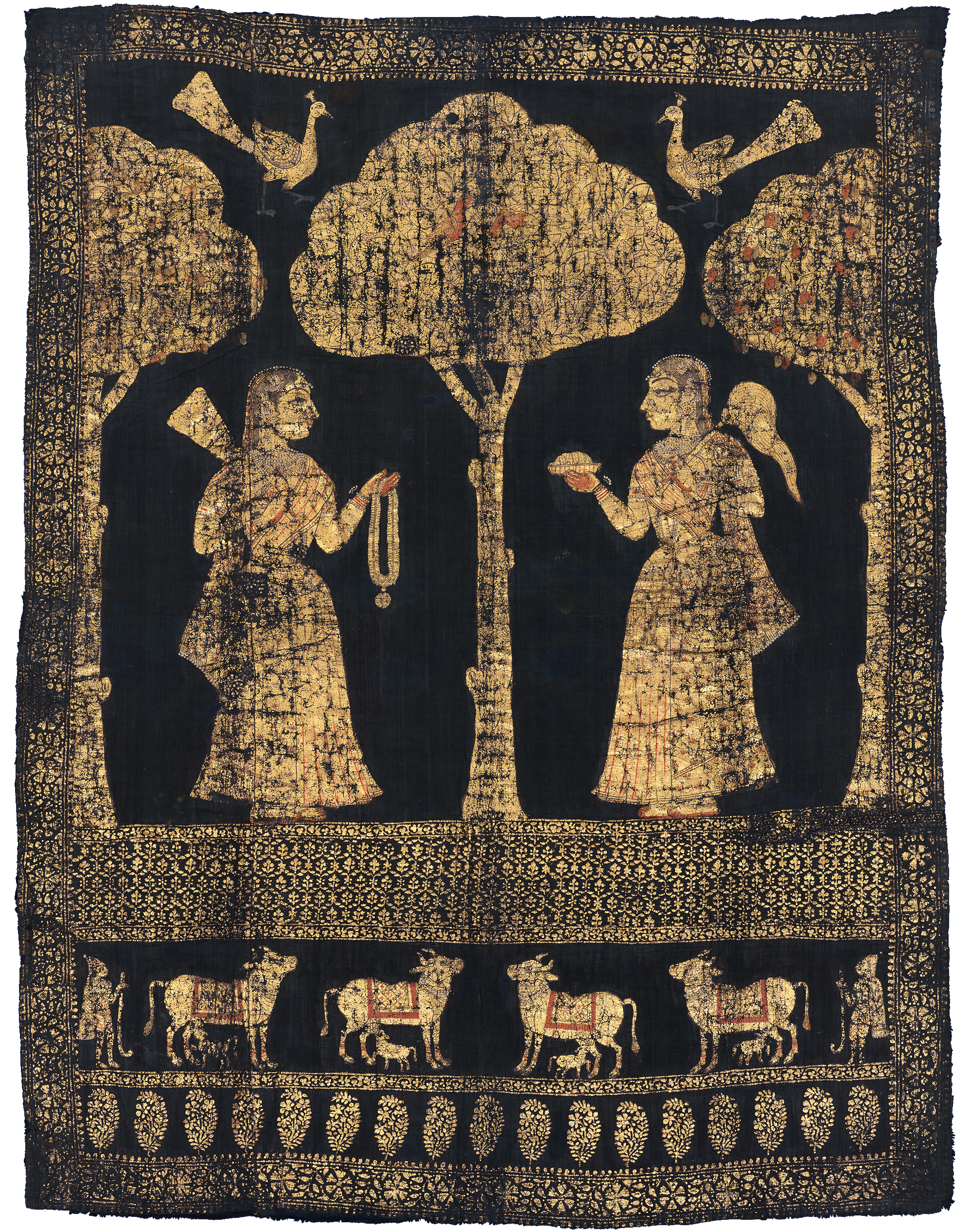Select a highlighted point on the painting to encounter insights from our contributing experts about that part of the painting.
The shapes indicate who the insight came from.
 | Conservation and Scientific Research Team |
|---|---|
 | Hindu Community Members Advisors |
 | Curatorial Team |
More object information
Mercantile elites from north and west India brought Pushtimarg devotionalism and the art of pichwais to the Deccan plateau (of southern India) in the eighteenth century. The most distinctive Deccani pichwais are stamped and painted with pure gold on cotton that has been dyed in deep colors.
When Krishna lived in a cowherders’ village, he adored and was adored by the milkmaids (gopis). This pichwai depicts two gopis yearning for Krishna during the rainy season (monsoon). When this stenciled and painted textile was displayed behind an icon of the child-god, the elegant gopis would have appeared to be offering gifts of fragrant jasmine directly to their beloved deity.
A region in north India near the Yamuna River in the state of Uttar Pradesh. Mount Govardhan and the city of Mathura are located in Braj.
A teardrop-shaped design motif (often called paisley in the West).
A village milkmaid. The gopis, who felt deep affection for Krishna during his lifetime on earth, personify devotion to the god.
A low mountain located outside the north Indian city of Mathura that is associated with the child Krishna, who miraculously lifted it to shelter his devotees from a torrential rain.
The Mughal Empire controlled much of India between 1526 and 1857. Elements of its highly refined court culture were adopted across India.
A large painted or woven cloth that is an integral part of Pushtimarg devotion to Krishna.
The "Path of Grace" is a Hindu devotional tradition founded in the fifteenth century. It centers on the deity Krishna as a seven-year-old child.
A classical Indian musical mode associated with the monsoon season.
The divine circle dance in which Krishna multiplied himself for each gopi.
In the Pushtimarg community, devotees who care for and serve Krishna.
A festival on the night of the full moon (purnima) in the month of Sharad (September–October).
The central deity of the Hindu Pushtimarg tradition is a form of the god Krishna. Shri Nathji’s name refers to his status as the Lord of Mount Govardhan.
The Yamuna River begins in the Himalayas and flows south past New Delhi before merging with the Ganges. Hindus consider the Yamuna sacred.
Peacocks are associated with Krishna (who wears a peacock-feather crown), the monsoon season, and romance, because the birds’ cry (‘piu piu’) sounds like piya, the Hindi word for “darling.”

"In this pichwai, you see that the peacocks are dancing and singing. During the monsoon, peacocks are always around. [The musical composition] Raag Malhar is usually sung during this time, and it's beautifully sung.”
—Amishi Parikh, sevak
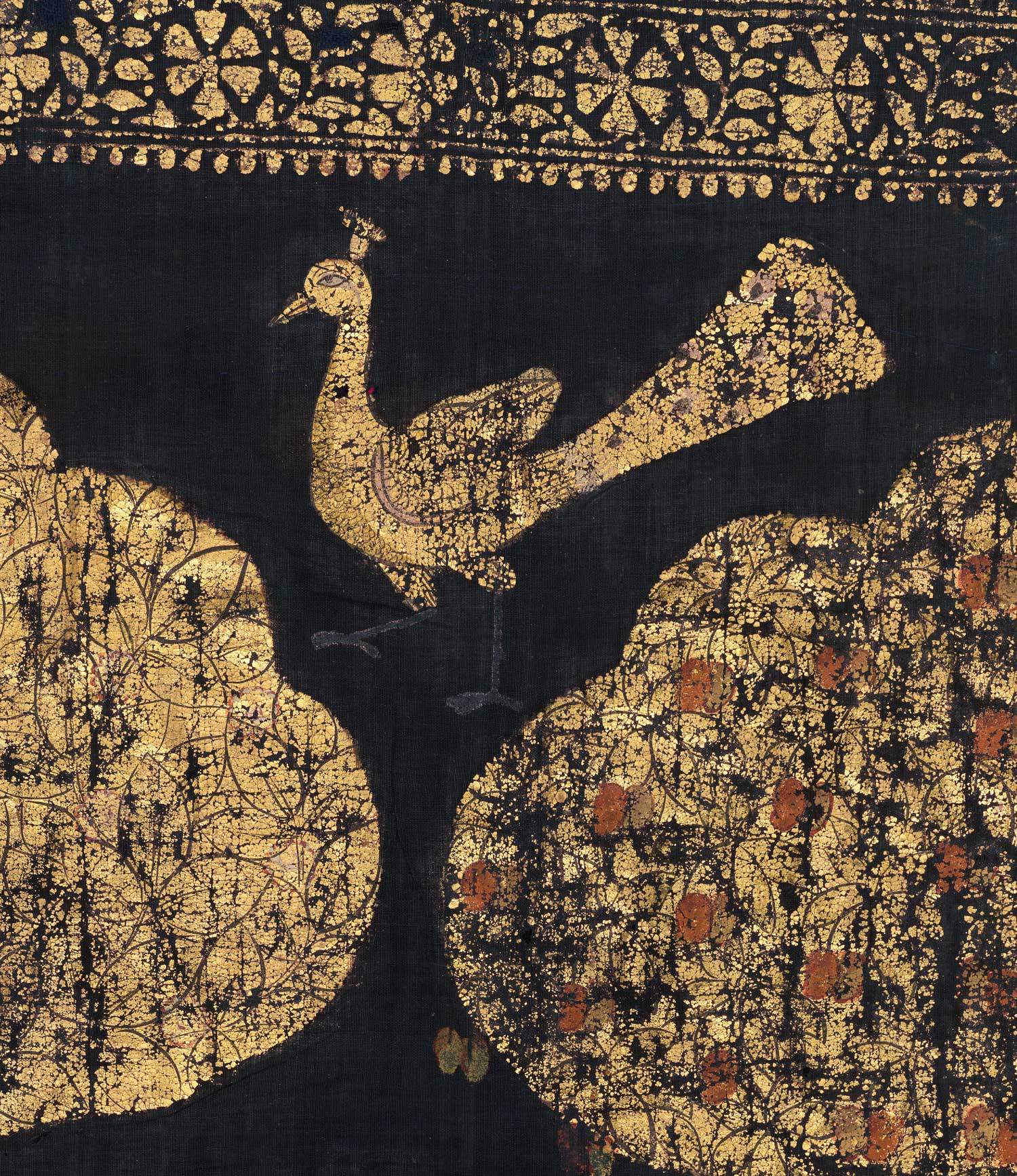
The Kadamba tree (Neolamarckia cadamba) evokes a famous event from Krishna’s youth in Braj. One dawn, the young god mischievously took the milkmaids’ (gopis) clothes while they were bathing in the Yamuna River. He then hid himself in a Kadamba tree. By depicting a Kadamba, the artist suggests the gopis think Krishna may be hiding in the tree.
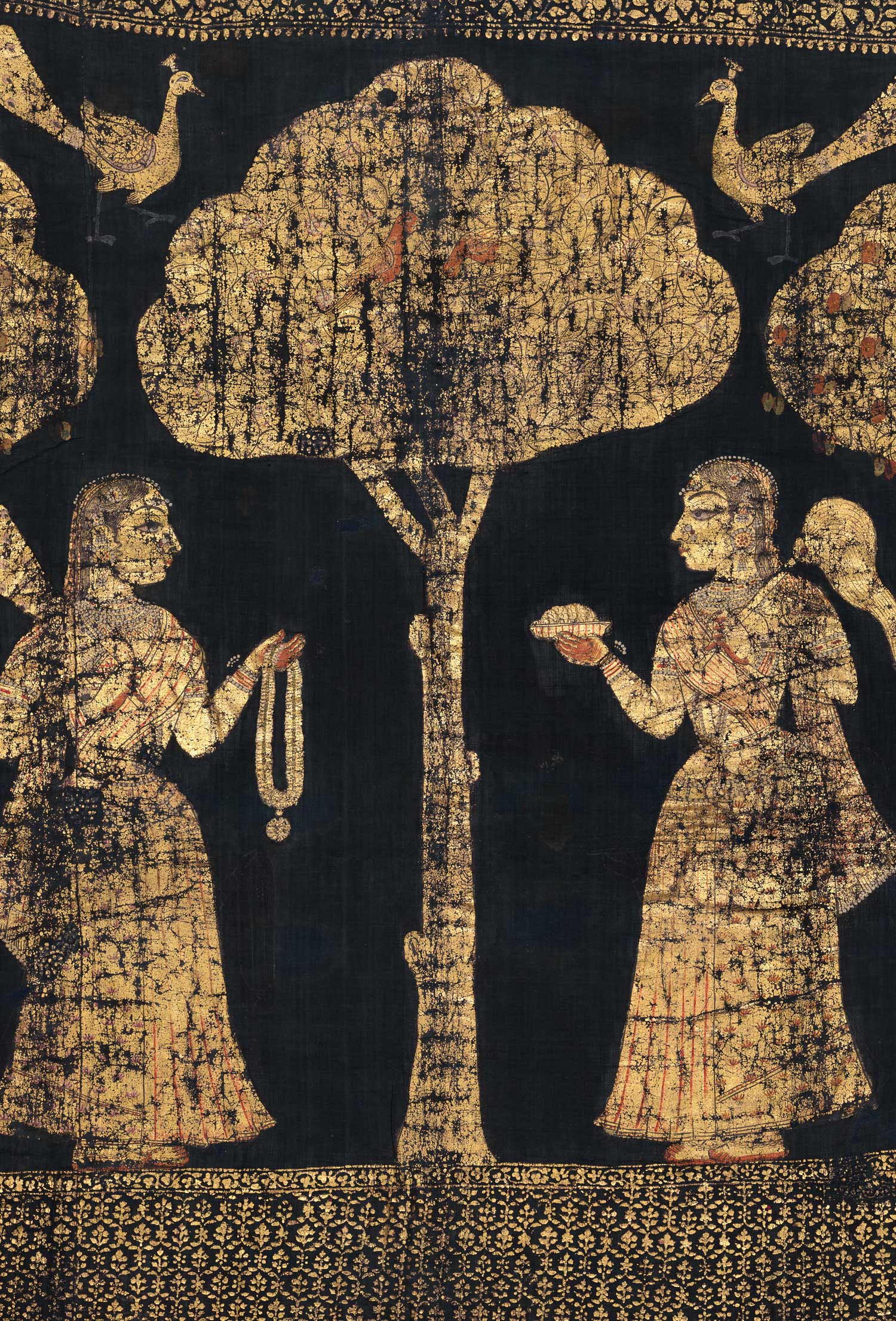
The warm gold color was achieved by applying a thin layer of gold leaf over an orange-red ground layer.
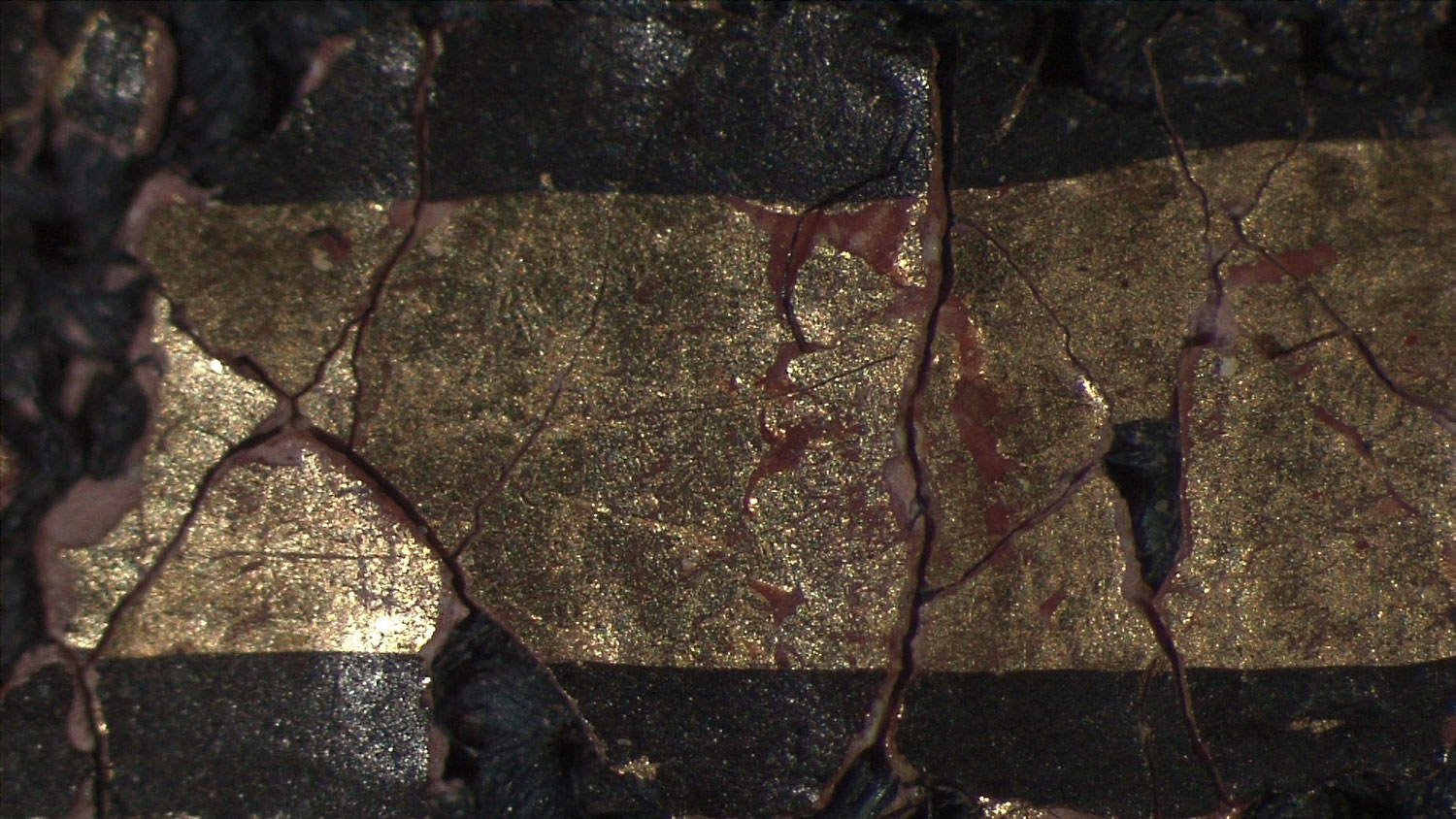
To honor Krishna, this milkmaid (gopi) brings a fragrant flower garland and a peacock-feather whisk. Her lotus petal-shaped eye is a traditional Indian mark of beauty.
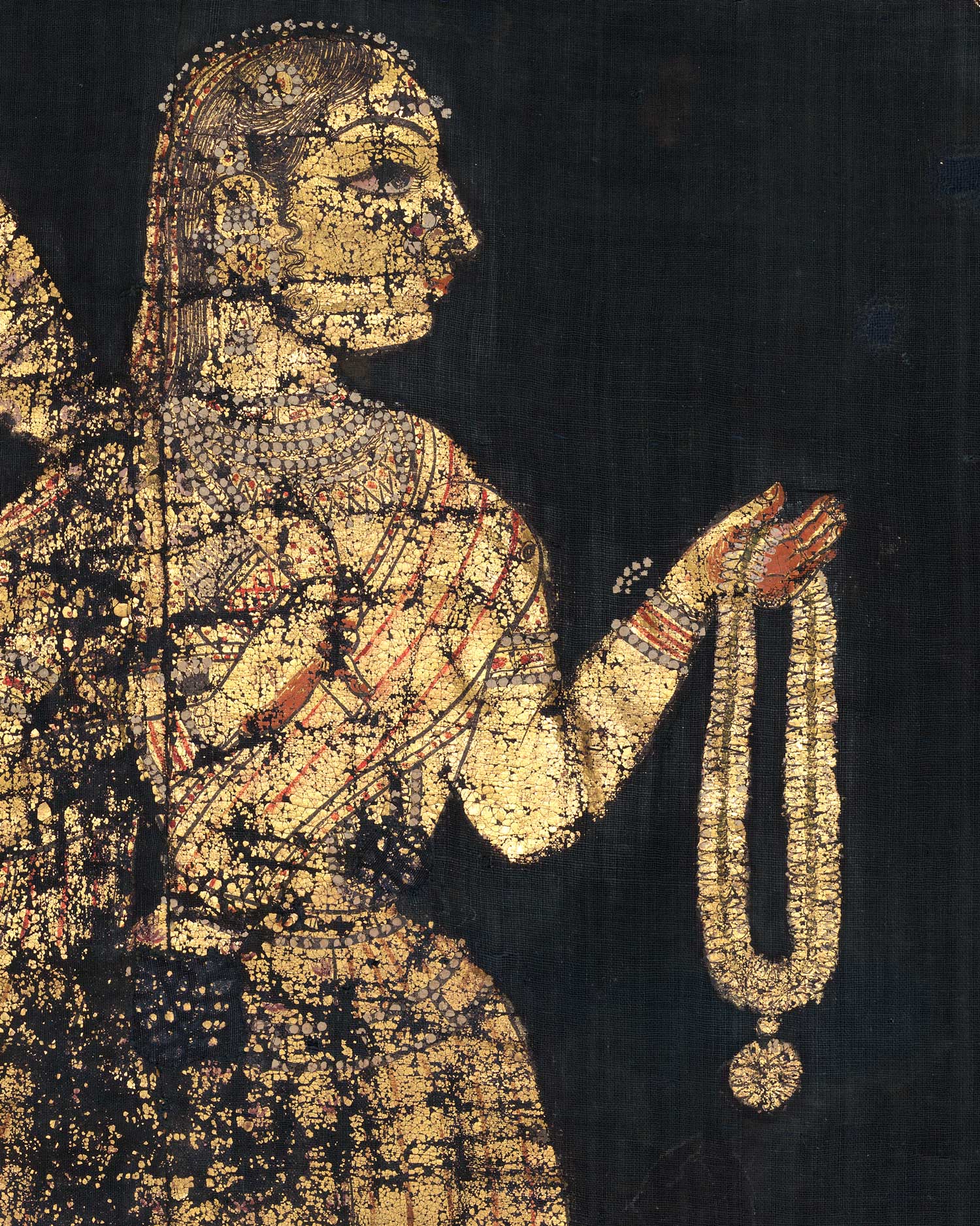
“In the minds and eyes of gopis, the tree at the center manifests the divine presence of Krishna. To him, they are offering seva (loving service). The birds and cows evoke Braj in the minds of sevaks.”
—Shri Pramod Amin, sevak
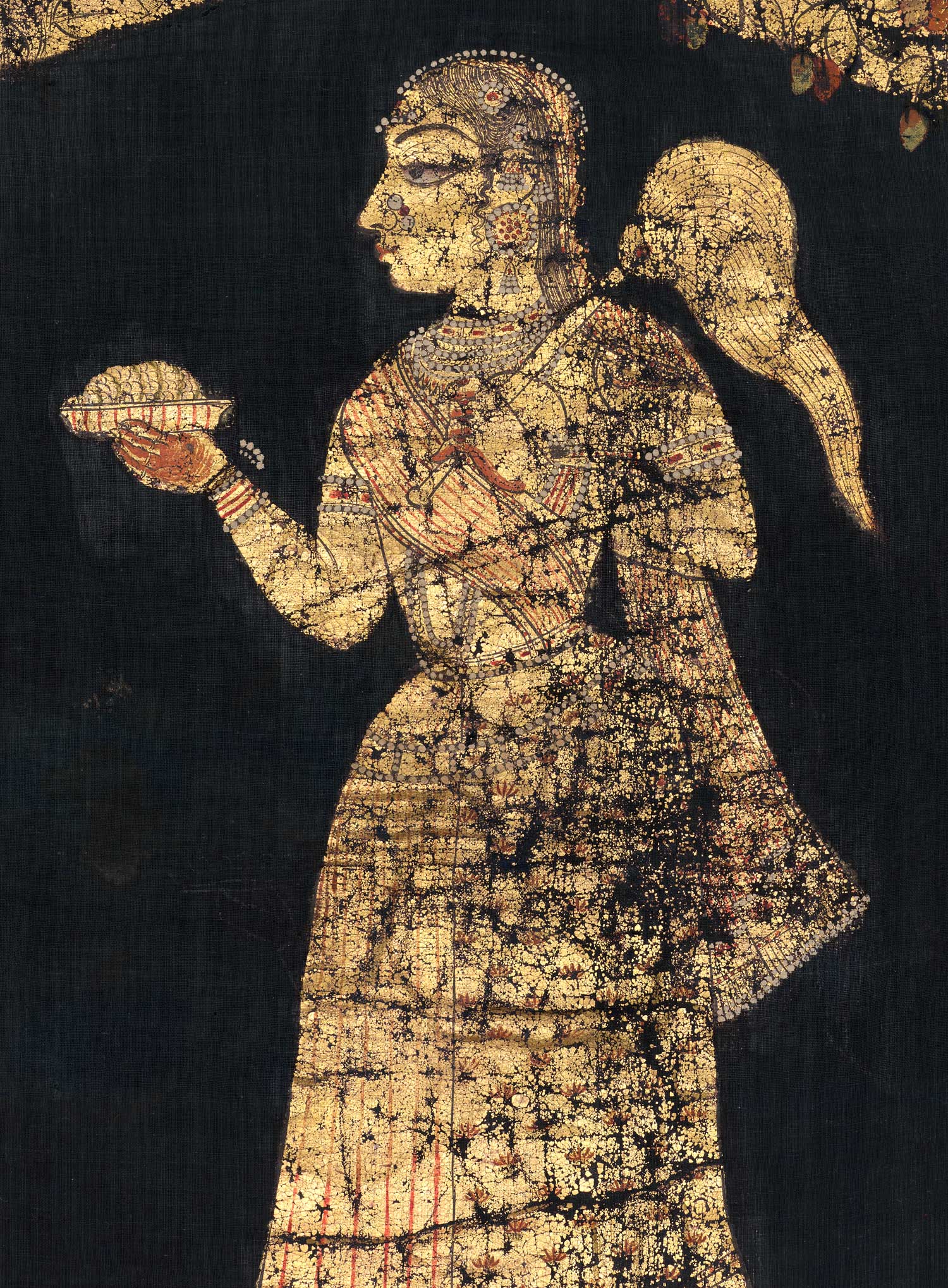
Although the gold is what first catches your eye, this pichwai was painted with great detail to further enhance the image. Two shades of orange and red decorate the cows’ blankets. The gopis wear multiple colors that add even more luxury to the pichwai.
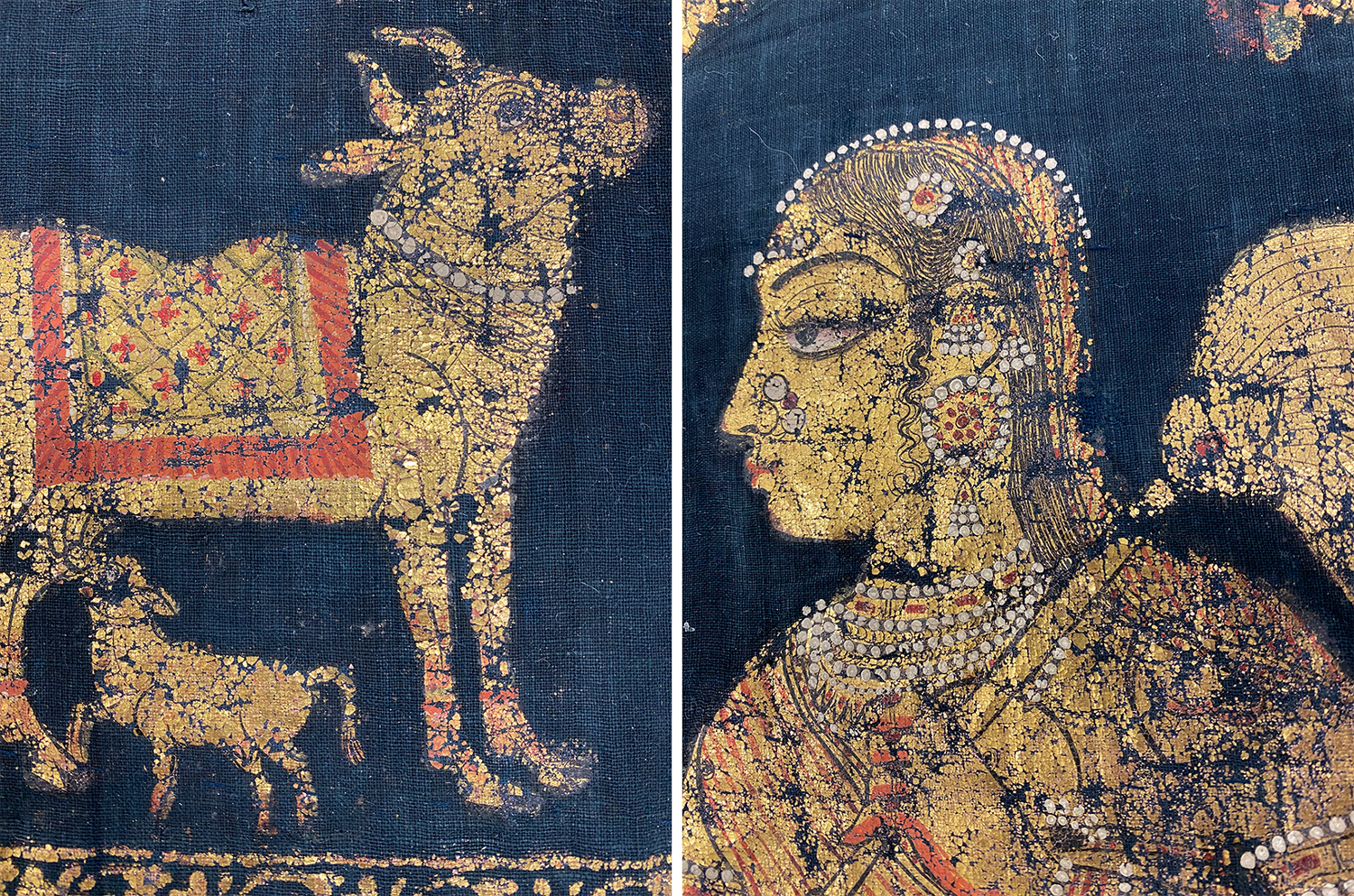
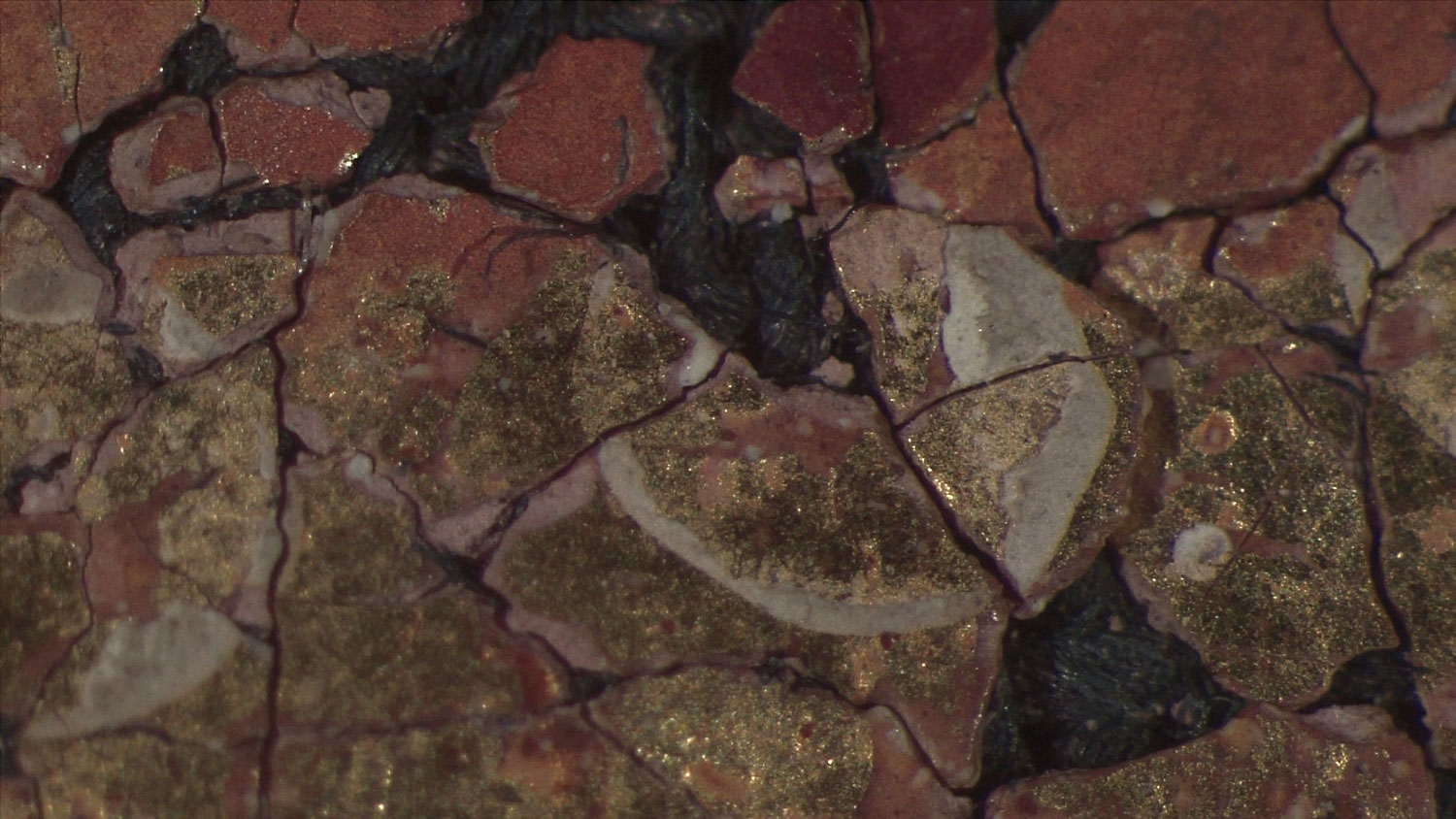
This is a repair. The patch was taken from a gilded pichwai of a complementary design. Artisans would not throw away a damaged pichwai. Instead, they would save the painting and use it to care for similar pichwai.

Smiling cows evoke the cowherders’ village in Braj where Krishna lived as a child. These cows lovingly care for their young, which echoes the deep parental affection Pushtimarg devotees have for Krishna as a child-god.
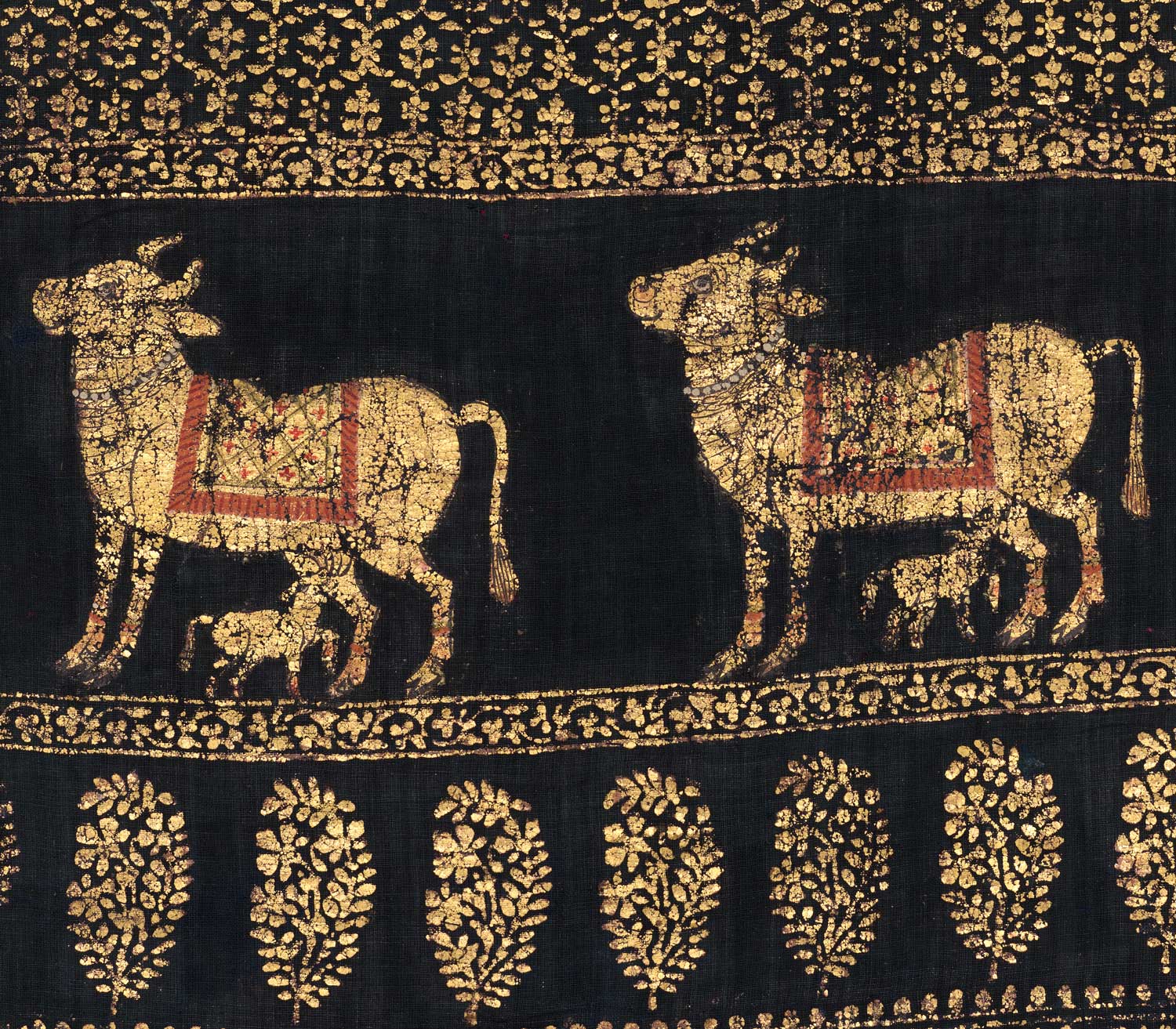
Two shades of vermilion, one orange and one red, were used to make the striped cow blanket. We can use X-ray fluorescence to identify vermilion (sindur in Hindi) through the presence of mercury and sulfur.
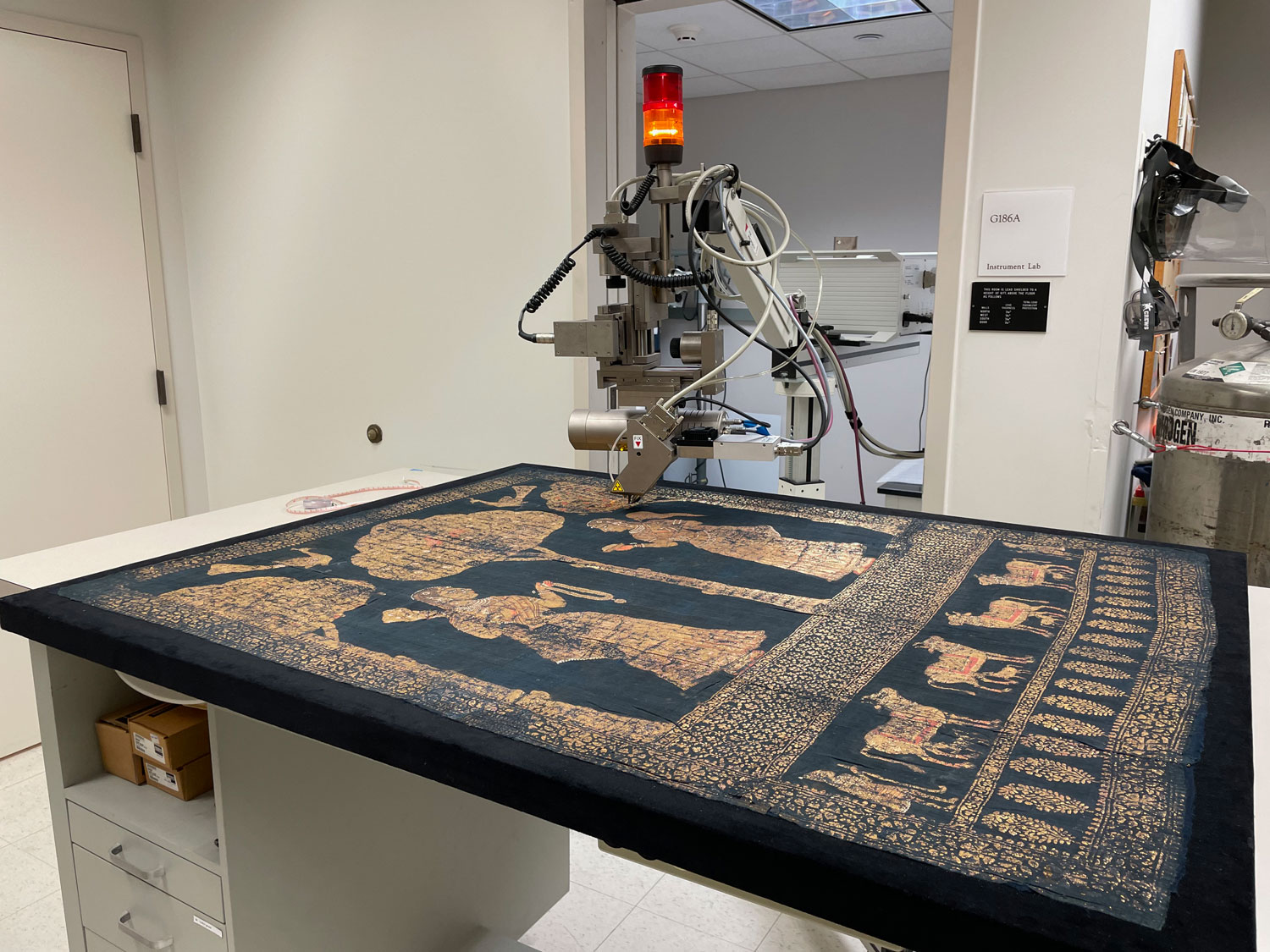
The design motif of evenly spaced flower clusters was associated across India with elegance and luxury. Known as buta, the motif first became popular at the imperial Mughal court in the seventeenth century.
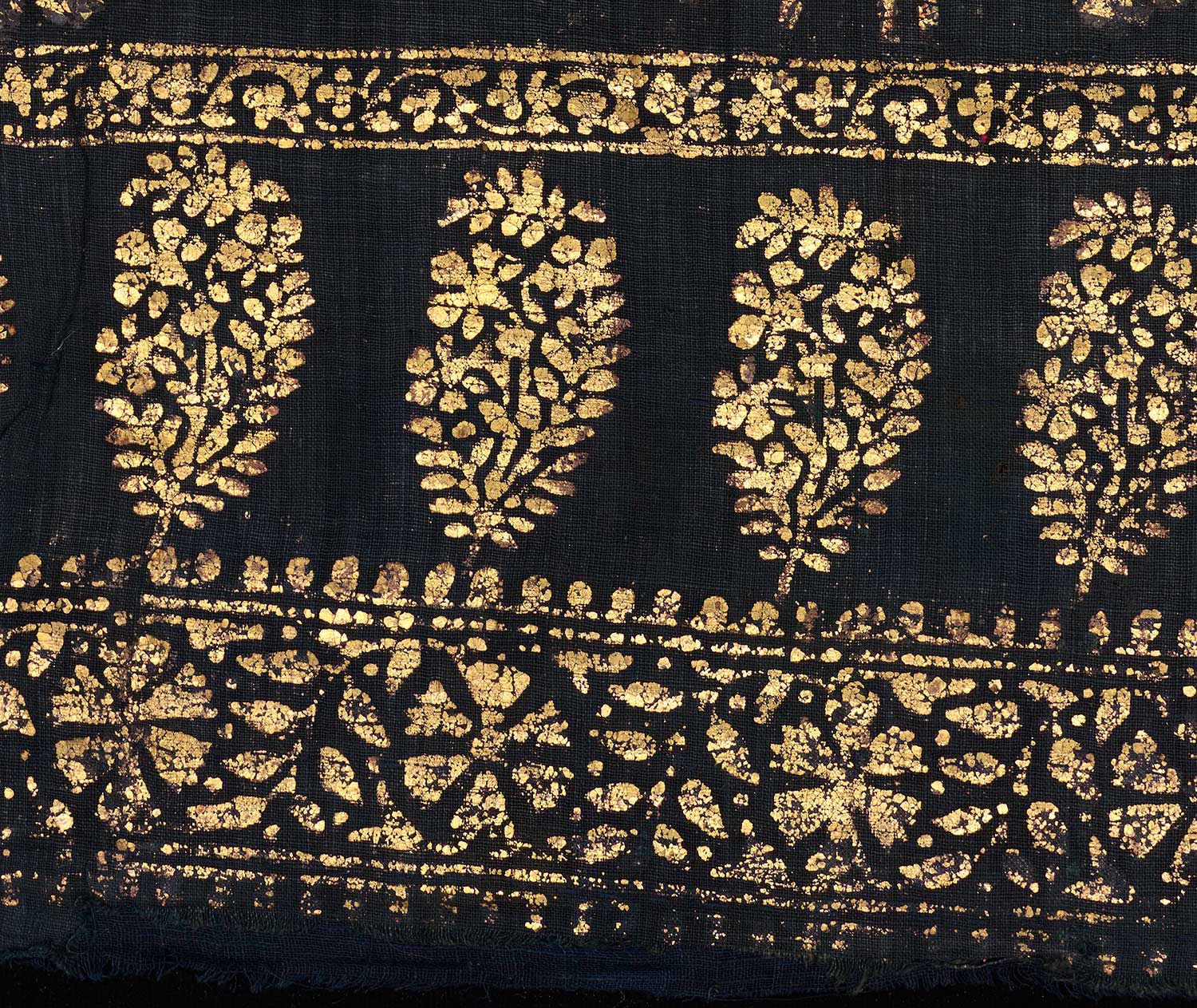
The pichwai is currently stitched to a large piece of black velvet fabric, which is mounted over a stretcher for display. However, the earlier lining was well chosen for its role: it is also a fabric made of very fine, blue cotton weave, so it did not cause dimensional strain. This lining has its own secret past, as it features clusters of embroidered red flowers threads of which are visible at the edge of the pichwai.
